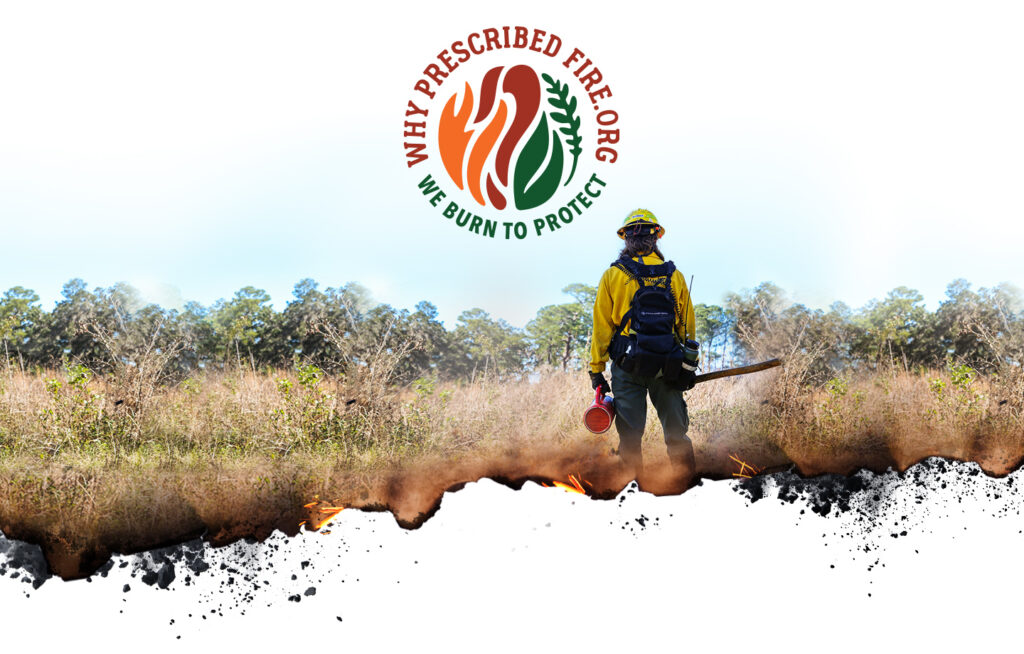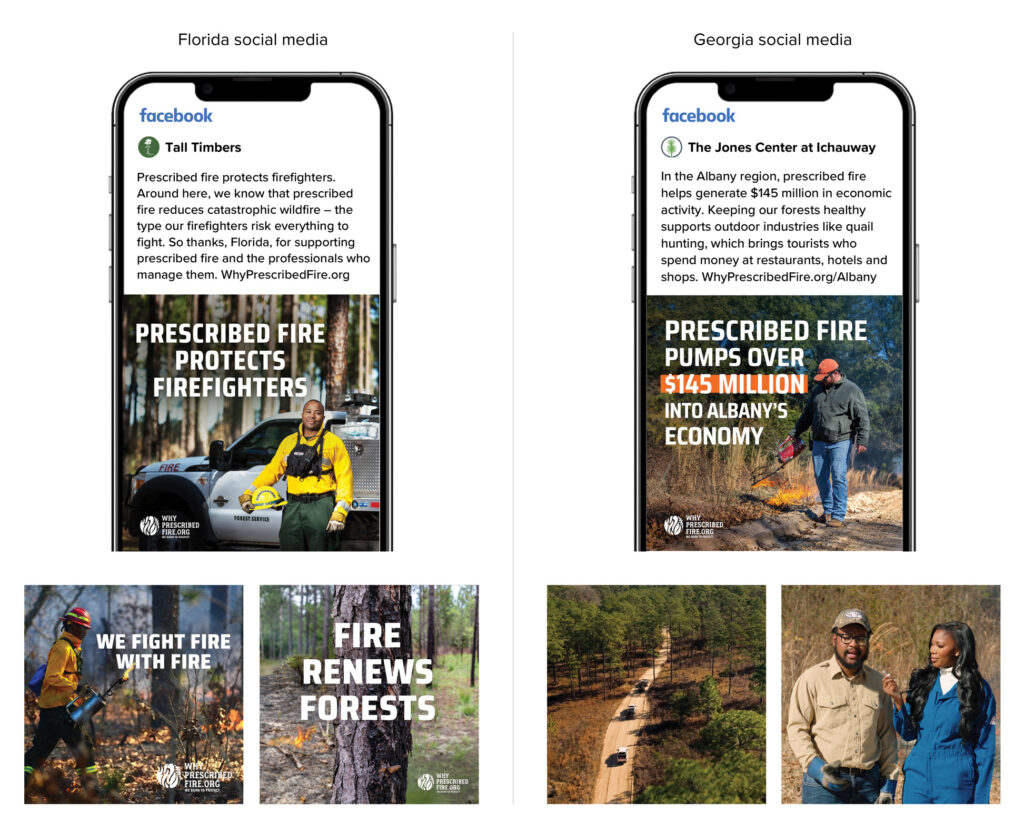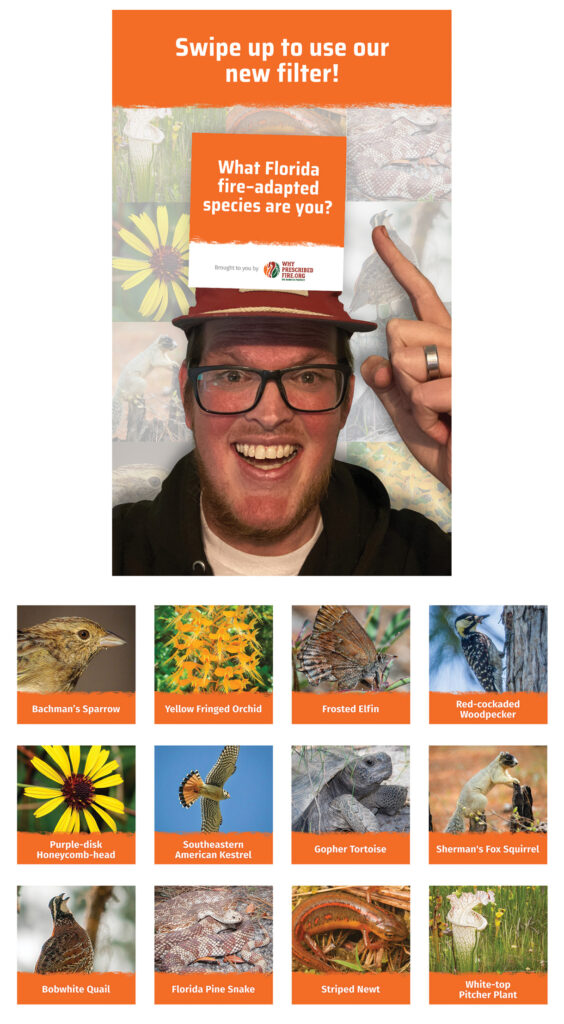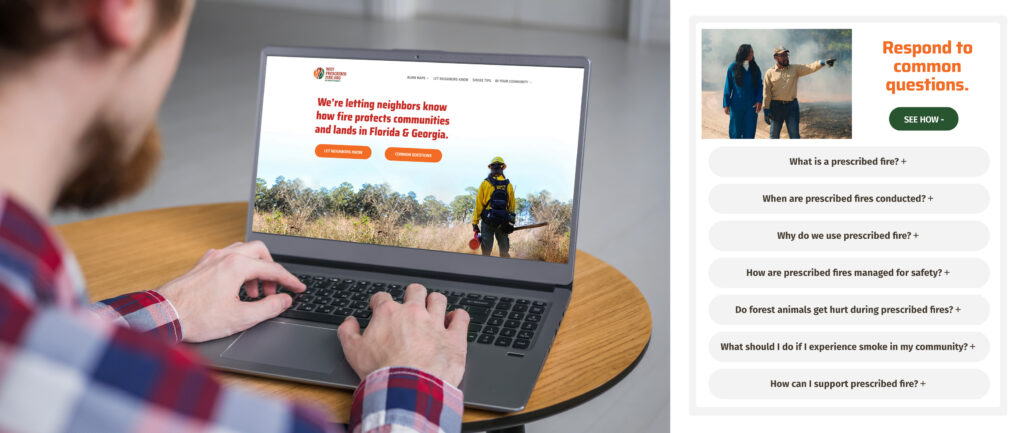The Insights Center features ideas, tools and resources on applying behavioral science to causes worth caring about. It includes the tools and thinking developed over nearly two decades of building behavior change campaigns and products. We hope they help you and your cause with the art and science of using behavior to spark real change.
Go
Why Would You
Set Forest Fires
On Purpose?
Decades of warnings from Smokey Bear have seared forest fire prevention into the public mind. But one of the best ways to fight wildfire is with fire itself. To build support for prescribed fires, we focused on the sometimes surprising benefits these smaller, planned fires bring to local communities.

The Challenge. Prescribed fire is essential to the health of forests across the Southeast U.S. These small, planned fires prevent larger, more dangerous wildfires. They also help wildlife by clearing underbrush and allowing fire-dependent food sources to grow. But communicating that science in an easy-to-understand way can be tough.
Our Approach. Two wildland management and conservation organizations – Tall Timbers in North Florida and The Jones Center at Ichauway in South Georgia – tapped Marketing for Change to build a public support campaign. We conducted research to measure the general level of knowledge about prescribed fire in the two regions and to identify which benefits associated with prescribed fire might resonate in each community.
We built the WhyPrescribedFire.org brand and website, which answers “burning” questions, highlights relevant community benefits, and equips people with “knowledge cash” – bits of “did you know?” information – that they can easily share with neighbors, family and friends. We also included a Smoke Tips page with easy ways smoke-sensitive residents can protect themselves and loved ones during active burns.
Behavioral Insights. Using our Behavioral Determinants Framework, we focused on finding the intersection between what people care about and how prescribed fire can help. In Florida, people living near forests were motivated by wildfire prevention and wildland protection – and it helped to highlight that forest critters benefit from planned fires.
Albany, Georgia, residents agreed in interviews that protecting forests was important. But researchers spotted social desirability effect at play. By probing more deeply, we learned that urban residents saw wildlands as a place to avoid, not visit. And they didn’t see wildfires as a local threat. What did resonate? Albany, Georgia, is an economically depressed town, and people cared deeply about the jobs that prescribed fire protects.
How We Spread the Word. Our campaigns have reached a majority of residents in four Florida markets (Tallahassee, Jacksonville, Orlando and Tampa) via social media and broadcast TV. In Albany, we targeted radio ads and live DJ reads; we also created social media videos that leveraged “day-in-the-life” and “tiny-mic” trends. Across both markets, video completions have exceeded industry benchmarks, a hallmark of engagement. And, while website traffic was initially driven by paid ads, organic searches and referrals now drive most of the traffic, indicating that brand awareness and partnership building has been a success.
The campaign was also honored with a Gold American Advertising Award, a national competition recognizing creative excellence in advertising.
Take a listen to the radio ads that played in rural Georgia.

“What Florida fire-adapted species are you?” Instagram filter.







